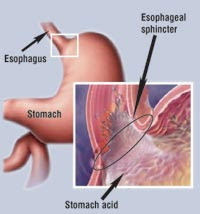Nursing Care Plan for Glomerulonephritis
Nursing Diagnosis: Ineffective Tissue Perfusion related to water retention and hypernatremia
Expected outcomes:
Clients will show marked normal cerebral tissue perfusion with blood pressure within normal limits, decrease water retention, no signs of hypernatremia.
Nursing Interventions Ineffective Tissue Perfusion related to Glomerulonephritis:
1. Monitor and record blood pressure every 1-2 hours a day during the acute phase.
Rational: to detect early symptoms of blood pressure changes and determine interventions.
2. Keep the airway, suction prepare.
Rational: the attack can occur due to lack of oxygen to the brain perfusion.
3. Arrange provision of anti hypertension, monitor client reactions.
Rationale: Anti-Hypertension can be given, because uncontrolled hypertension can lead to kidney damage.
4. Monitor the status of the volume of fluid every 1-2 hours, monitor urine output (N: 1-2 ml / kg / hour).
Rationale: Monitor is necessary for the expansion of the volume of fluid can cause increased blood pressure.
5. Assess neurological status (level of consciousness, reflexes, pupil response) every 8 hours.
Rational: To detect early changes that occur in neurological status, facilitate interventions.
6. Set diuretic administration.
Rational: A diuretic can increase the excretion of fluids.
Nursing Diagnosis: Ineffective Tissue Perfusion related to water retention and hypernatremia
Expected outcomes:
Clients will show marked normal cerebral tissue perfusion with blood pressure within normal limits, decrease water retention, no signs of hypernatremia.
Nursing Interventions Ineffective Tissue Perfusion related to Glomerulonephritis:
1. Monitor and record blood pressure every 1-2 hours a day during the acute phase.
Rational: to detect early symptoms of blood pressure changes and determine interventions.
2. Keep the airway, suction prepare.
Rational: the attack can occur due to lack of oxygen to the brain perfusion.
3. Arrange provision of anti hypertension, monitor client reactions.
Rationale: Anti-Hypertension can be given, because uncontrolled hypertension can lead to kidney damage.
4. Monitor the status of the volume of fluid every 1-2 hours, monitor urine output (N: 1-2 ml / kg / hour).
Rationale: Monitor is necessary for the expansion of the volume of fluid can cause increased blood pressure.
5. Assess neurological status (level of consciousness, reflexes, pupil response) every 8 hours.
Rational: To detect early changes that occur in neurological status, facilitate interventions.
6. Set diuretic administration.
Rational: A diuretic can increase the excretion of fluids.







